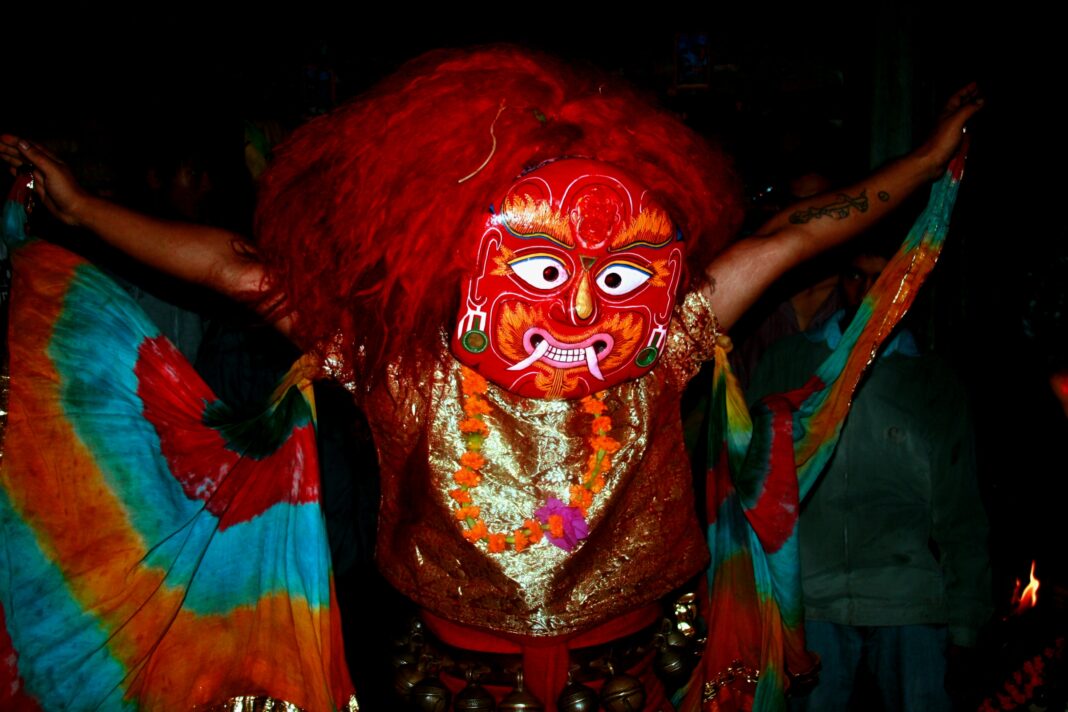The Lakhe dance, or “Lakhe Nach” in Nepali, is a vivid and culturally rich traditional dance deeply embedded in the heritage of Nepal, especially among the Newar community of the Kathmandu Valley. This dance, marked by its dynamic movements and fierce masks, is a significant part of the Indra Jatra festival, one of Nepal’s grandest annual celebrations.
Origins and Mythology
The Lakhe dance has its roots in ancient mythology. The Lakhe is portrayed as a demon who once resided in the forests but was drawn to the Kathmandu Valley, enchanted by its beauty. According to legend, this demon either fell in love with a local girl or was tamed by the valley’s residents, who allowed it to stay on the condition that it would protect the community from evil spirits. This duality—Lakhe as both a protector and a wild, untamed force—forms the core of the dance.
Celebration During Indra Jatra
Lakhe Nach is performed primarily during the Indra Jatra festival, which usually takes place in September. Indra Jatra is a week-long festival that marks the end of the monsoon season and honors Indra, the god of rain, who is believed to bring a bountiful harvest. The Lakhe dance is a key feature of the festival, particularly in the streets surrounding Hanuman Dhoka and Basantapur Durbar Square in Kathmandu.
Significance of Lakhe Nach
The Lakhe dance is celebrated for several reasons:
- Cultural Preservation: Lakhe Nach helps preserve the rich cultural heritage of the Newar community, serving as a living link to the myths and legends that have shaped the Kathmandu Valley’s identity.
- Religious Importance: The Lakhe is seen as a guardian, protecting the community from evil spirits. The dance acts as a ritual to invoke this protective spirit, driving away negative forces and ensuring the safety and well-being of the people.
- Community Bonding: Lakhe Nach is a communal event that brings people together. The entire community participates, whether by performing, organizing, or watching the dance, fostering a sense of unity and shared cultural identity.
- Artistic Expression: The dance is also a vibrant form of artistic expression, with its elaborate costumes, intricately designed masks, and powerful, energetic movements. These elements make the Lakhe dance a visually captivating performance.
The Dance
In the Lakhe dance, performers—usually males—wear elaborate masks and costumes that transform them into the Lakhe. The dance is characterized by vigorous, dynamic movements that reflect the wild, untamed nature of the demon. Accompanied by traditional drums and cymbals, the performer jumps, spins, and makes forceful gestures, creating a mesmerizing and sometimes intimidating spectacle.
Conclusion
Lakhe Nach is more than just a dance; it is a vital tradition that embodies the myths, beliefs, and cultural identity of the Newar people. Celebrated during Indra Jatra, it connects the community with its past while ensuring protection and prosperity for the future. Through its blend of sacred rituals and artistic performance, the Lakhe dance continues to be a powerful expression of Nepal’s rich cultural heritage.
A global media for the latest news, entertainment, music fashion, and more.





